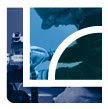For Full clip of what I analysed click here (embedding disabled)
The Title sequence that I looked at was Enemy of the State.
Enemy of the state was released in 1998 and was directed by Tony Scott.
It stars Will Smith, Gene Hackman, Jon Voight and many more.
Starts off by talking about a law which allows American government officials to spy on whoever they want to so that they can supposedly "increase security". The title sequence appears and shows the audience the law being put into action or getting ready for it.
I was initially looking at editing (my area to specifically look at) but I also took some notes on the other micro-elements like the Sound, Camerawork and Mise-en-scene.
As the film starts we have the beginning titles of the companies who helped make the film. during this we hear tense music which immediately lets the audience know that there is something wrong because of the beats and drone of the music. It also produces a sad atmosphere.
Then the film moves on to show the beginning credits in a computerised font style with strange letters. The references that the film will be about computers and codes. The words fade in and out a well as the sound.
The scene then fades to an early morning or late evening scene at a lake. We see a typewriter style text appear on the screen. The shot used is a long shot showing two cars, one parking up and a man on a bench. This shot makes the audience feel like they are spying on the characters in this scene. This is another reference to the rest of the film and the main theme of it. Also the typewriter effect produces shows that the film will be about computers and technology. This effect is similar to the Borne films. The editing through this first half of the title sequence is continuity because it creates match on action shots and conversation shots. The match on action is where the man opens the door for his dog and the camera cuts to a more zoomed in location so that we can see the dog better. The conversation shots are between the two older male characters who we later find out to be a congressman and a high government official in favour of the surveillance program. The cuts keep switching between close-ups of the characters, midshots of the two of them and long shots as if someone else is watching them. This creates a tenser atmosphere because of the fact that someone is spying on them and also it references the main theme of the film. We also get slightly shorter shot durations as the government official gets angrier at the congressman and grabs his coat.
Once the official says 'if we can't find a common...' solemn music is played which immediately tells the audience that something is wrong. Then we see the congressman walk back to his car and we also see a security officer (one of the other two men) following him. The music gets louder and the audience can almost guess that something is going to happen. This references the film by showing that lots of tension is going to be used. We then have severely reduced shot duration and many different angled shots as the security officer moves towards the congressman and kills him with an injection. The music builds up for this part and then quietens almost instantly as the shot durations increases again. We then see many different shots all match on action as the security officer sets up the death to look like the congressman had a heart attack. The car then rolls into the lake/river.
The film the bursts into the title sequence which has tense music with lots of jumpy beats in it. The film has now gone from continuity editing to non-continuity editing as the audience can tell that there has been a cut because it tends to cut to the same piece of footage again and again. We also see the title of the film in the same coded style text as the beginning of the film. After an aerial view like a helicopter view of a famous
The final shots have the music completely silence and just static pictures like a TV trying to tune itself in. This makes the audience disorientated once more before going into the main film
-------------------------------------------------------------------
Jon

No comments:
Post a Comment